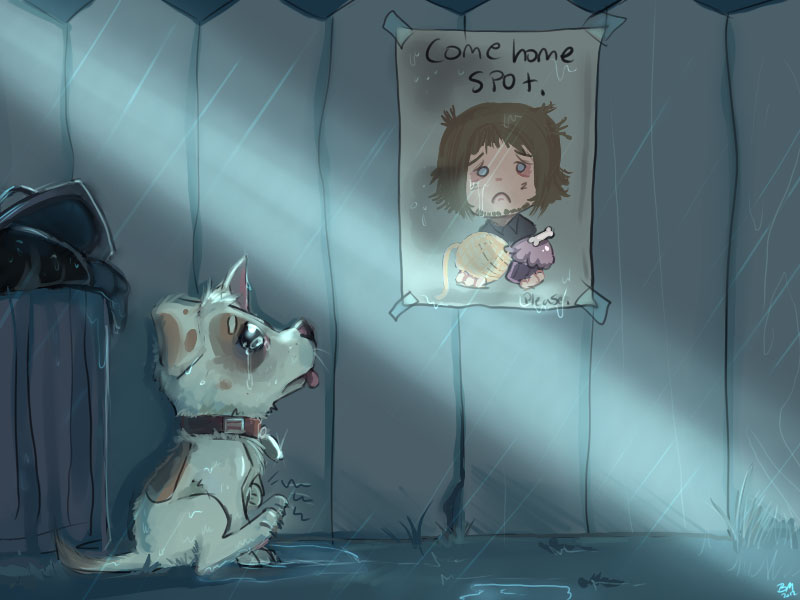Atopy is an allergic condition that can affect both cats and dogs. It is thought to be inherited, and is usually first seen between 6 months and 4 years of age, although it’s possible from 3 months to 7 years. Susceptible animals become allergic to pollens — grasses, trees, weeds — dust mites, mould and fungal spores, wool, flea saliva antigens, and become intensely itchy when exposed to their allergen(s). Allergy is usually due to a range of allergens.
Clinical signs:
The signs of atopy are generalised, all over itching. Dogs are particularly itchy around the ears, under front legs, groin and inside the hind legs, feet, around the eyes and on the belly. Mild cases have only one or two affected areas, more severe cases involve them all. Cats are usually most itchy around the head.
Initially the itch may wax and wane with seasonal changes in pollen numbers and types. Over time this seasonal pattern often becomes permanent. The intense itchiness causes the animal to chew, scratch and bite resulting in inflammation/redness of the skin, hair loss, brown saliva staining of the fur from licking (especially seen on front feet), scaling, crustiness, darkening and thickening of the skin, ulceration and secondary skin infections.
Inflammation and redness of the eyes may develop from animals rubbing their irritated eyes, and recurrent ear infections are also very common as the ears are lined in skin, which is affected.
How is atopy diagnosed?
The diagnosis of atopy can be made after we have seen a pet more than once with itchiness, or in severe cases involving most of the usual affected areas of skin. Other possible causes of the itching are food hypersensitivity, flea allergic dermatitis, mange mites, yeast infection of skin, or contact irritation.
We will examine your pet and usually take skin scrapings, ‘sticky tape’ preparations, and/or ear smears to examine under the microscope, or test in our pathology lab. In some cases we ask you undertake a food allergy trial to rule out this as possible or contributing cause of the itchiness.
Treatment protocols:
Atopy, and other allergies, are generally not curable, but they can be managed to keep your pet more comfortable. The one exception to this is hyposensitisation (see, referrals, below).
Treatment is based on the severity of clinical signs. Mild cases can often be managed with oral antihistamine tablets. We may have to work through a few different types of these before we find one that works well for your pet, trialing each for around 10 days. Advantages of using antihistamines include them being non-prescription, so once an effective medication is determined they can be purchased over the counter from us without a consultation. They are administered as needed not as a course, and have few side effects apart from drowsiness — which may be seen initially but most patients develop a tolerance to this after a short time — and increased appetite.
More severe or chronic cases with inflamed irritated skin are usually treated with corticosteriod injections and tablets. These settle the inflammation and itch, allowing healing. Short term use of these prescribed medications is fine, however high doses and long term use can result in side effects of immune suppression with an increased susceptibility to infections, increased hunger, thirst, and urination, muscle weakness, thin skin and hair loss.
If secondary skin infections are present (which are common), antibiotics and specialised shampoos may also be prescribed.
Most atopic pets are also extremely sensitive to flea bites, so a regular good quality flea treatment like monthly Frontline or Advantage is important. We recommend all atopic patients and their housemate pets be treated. Although other pets in the house may not themselves be affected by flea bites they carry fleas which will bite the affected pet. Many patients have their overall itch level reduced by good flea control, including oral fatty acid supplements in their diet, or by using special anti itch shampoos and conditioners such as Epi-soothe, Resi-soothe or Aloveen.
Ear infections are frequently present and need to be treated with ear drops or oral medication.
Referral:
Atopic patients have the option of referral to specialist veterinary dermatologists. We sometimes recommend this for severe cases, especially those with a year round pattern, and those that are difficult to control. Dermatological specialists may perform a skin patch test to identify the allergens involved, and try to reduce your pets response to these through hyposensitisation. Hyposensitisation involves a course of injections of the allergens at gradually increasing doses over a long period, to ‘train’ the pets immune system to respond normally rather than excessively when exposed to these naturally in the future.


